How do LED lamps Lisma
When I wrote about the Russian LED lamps Lisma, many did not believe that they are made in Russia and suggested that we pack them at best, and the whole production is located in China. In the spring I visited Saransk at the Lisma plant and saw with my own eyes how the lamps were made.

It all starts with the production of glass, which is born in the furnace and drawn into a thin flat tube.
')
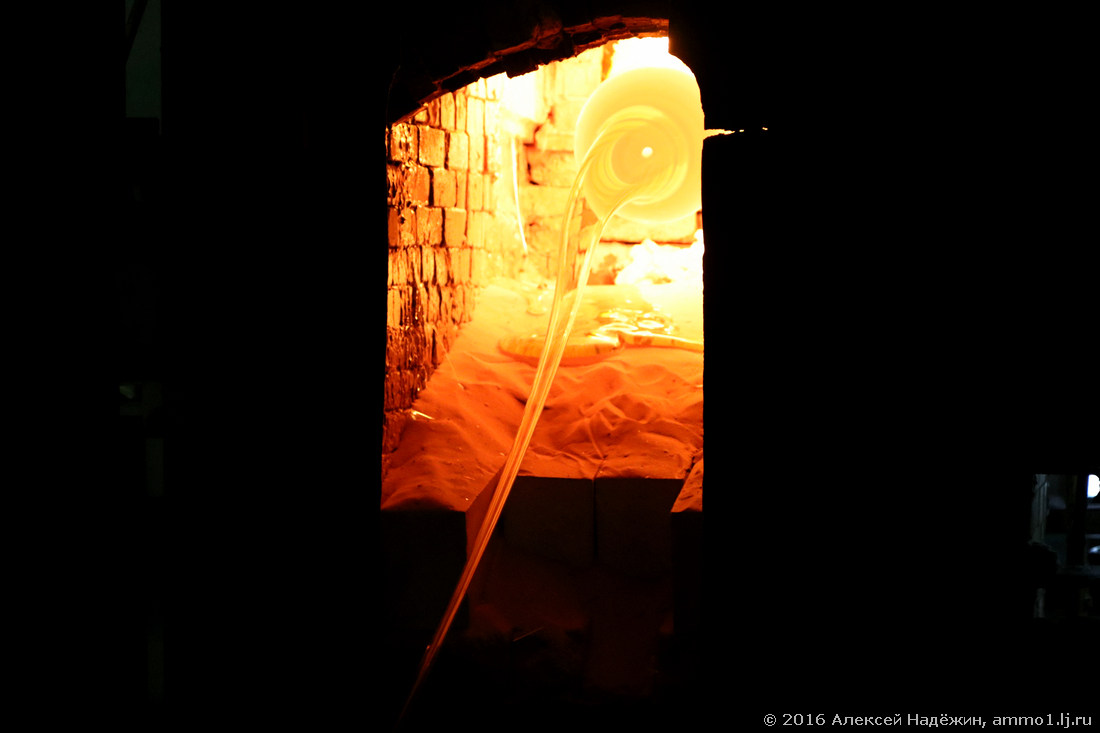
Before it cools, the tube stretches several tens of meters through the workshop.

Then the tube is cut and legs and bulb tubes are made from these pieces.
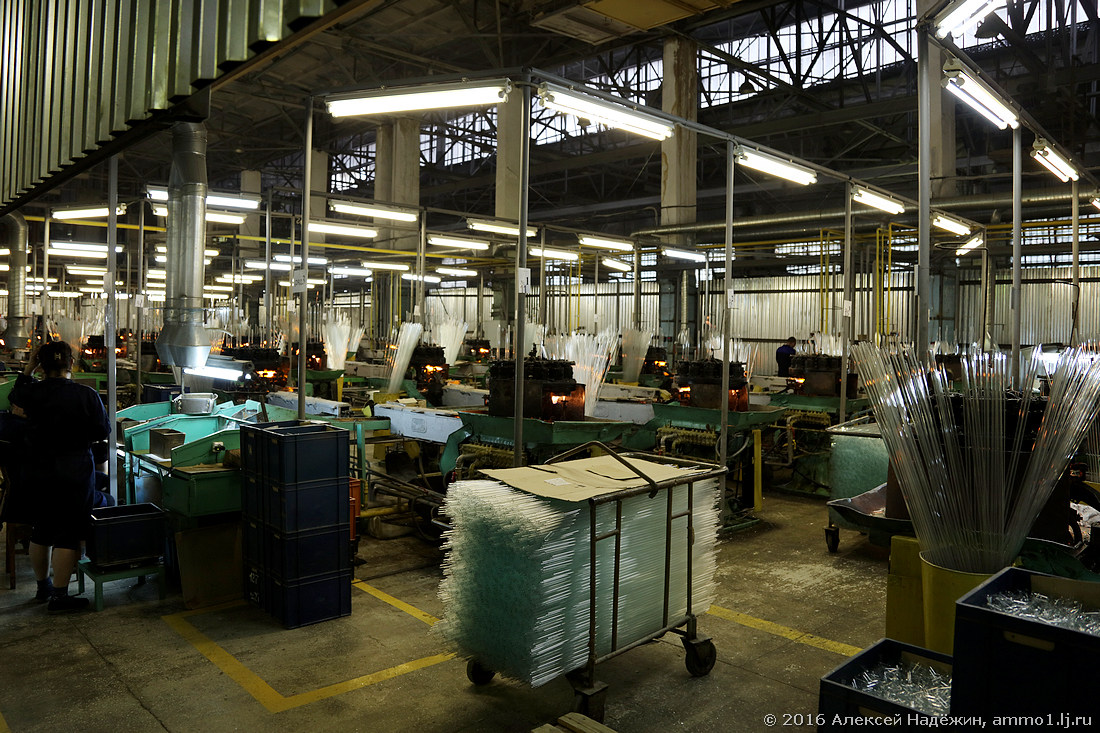
Glass tube cutting machine.
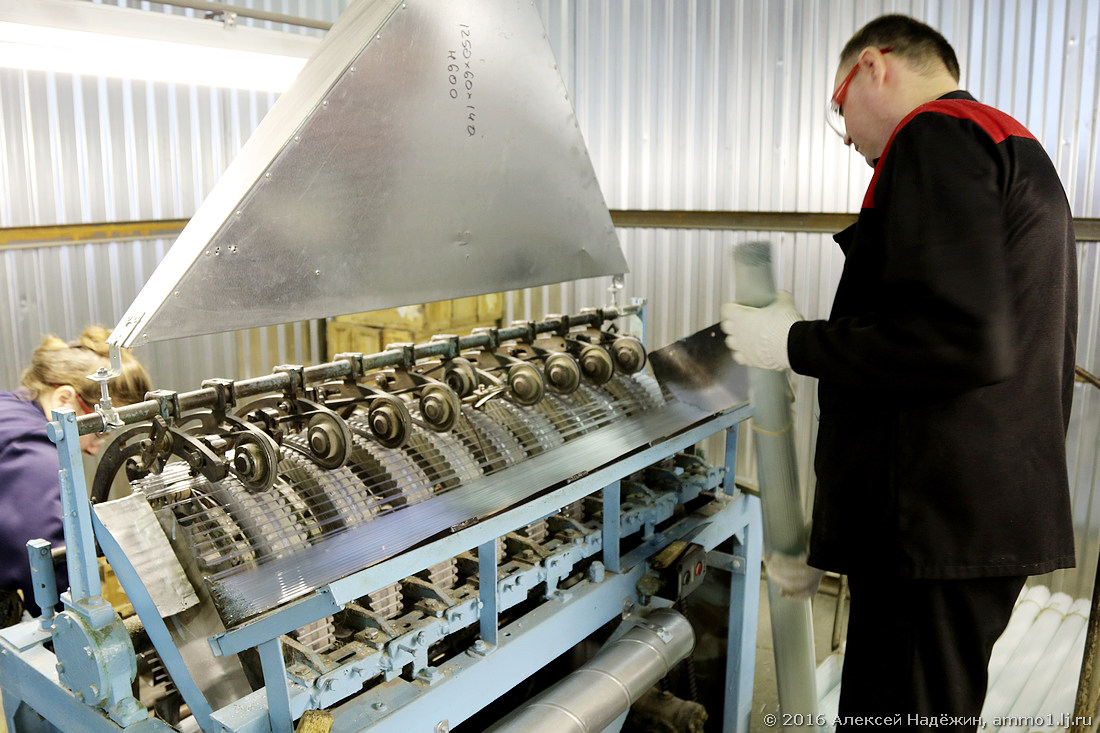
Glass blower. There are dozens of them in the workshop.
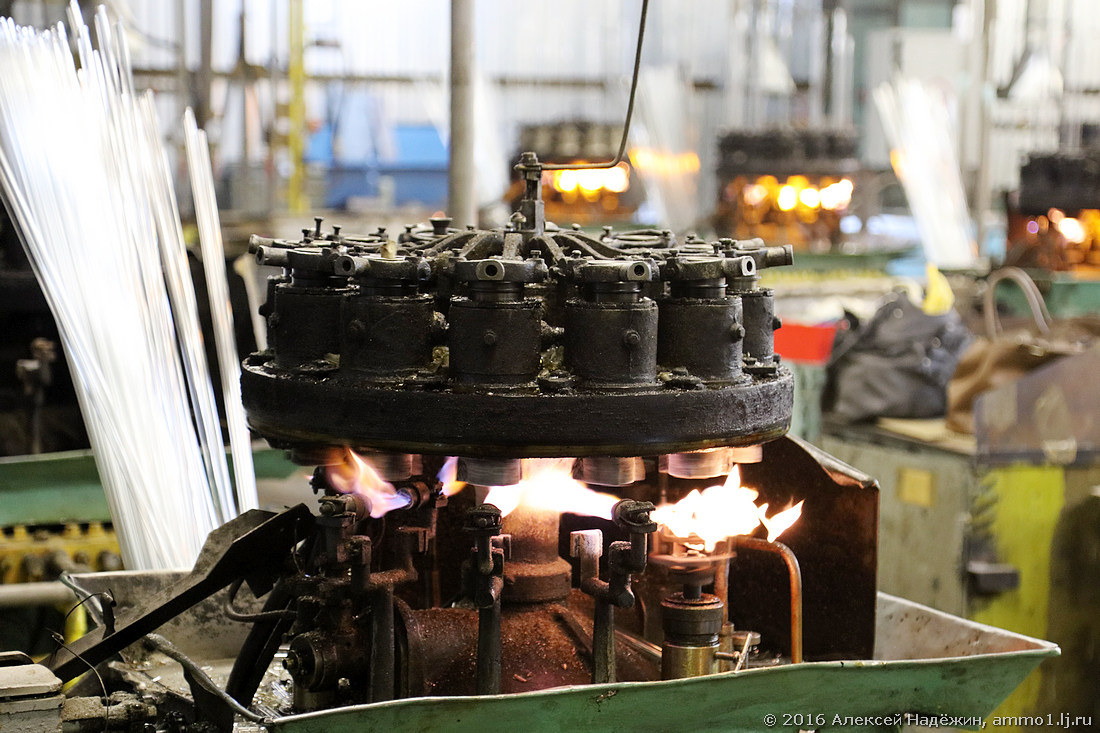
The power of the plant allows not only to use its glass, but also to supply them with other lamp plants that do not have their own glass production. Blanks are waiting for shipment, the process is managed by the Chief in the hot shop. Did you notice him?
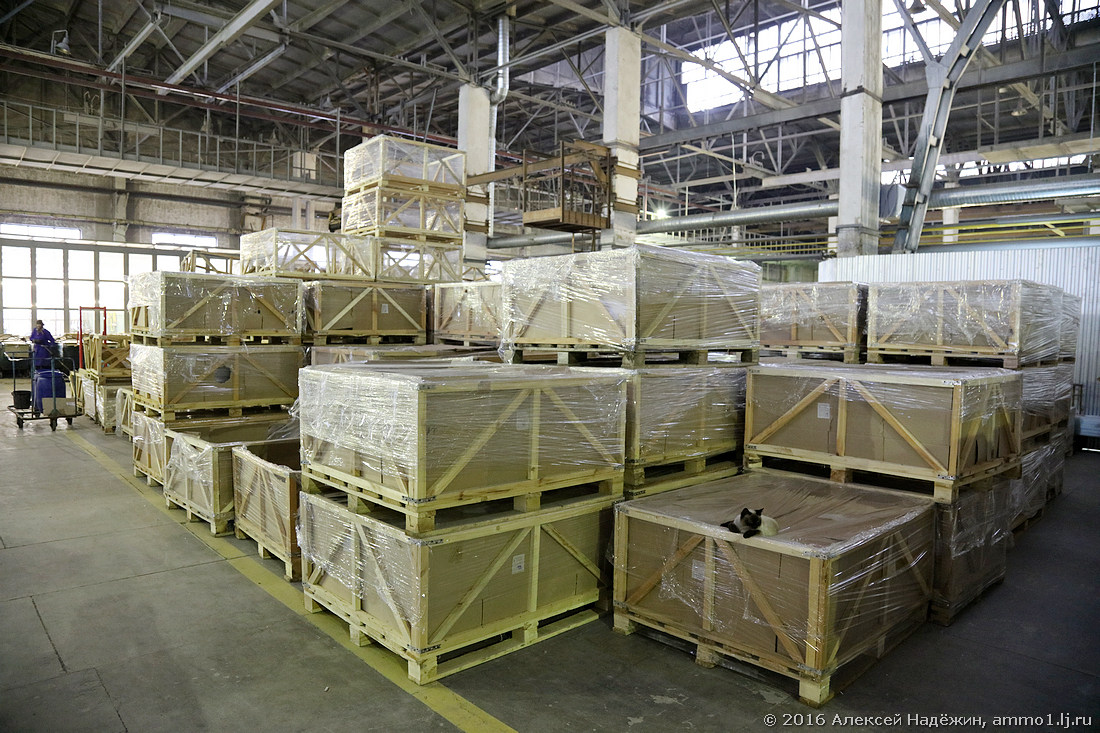
Here it is in all its glory!
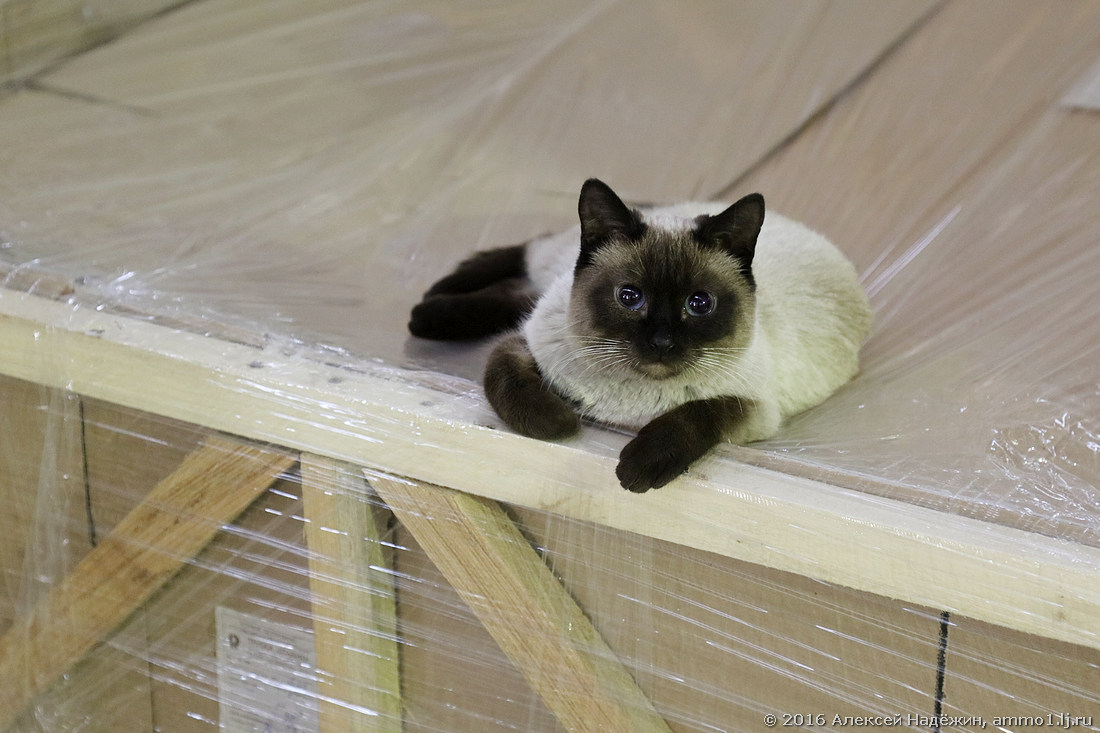
The machine forms the lamp stem, brewing wire-electrodes into it.

Lisma produces 30,000 LED lamps per month. At the same time, conventional lamps are produced millions and their production process is fully automated. When the volume of LED lamps produced becomes large, the production process will also be fully automated, but so far the lamps are assembled manually.
LED filaments - the basis of the filament LED lamps are purchased in China. But on the leg of their hands were welded Russian workers.
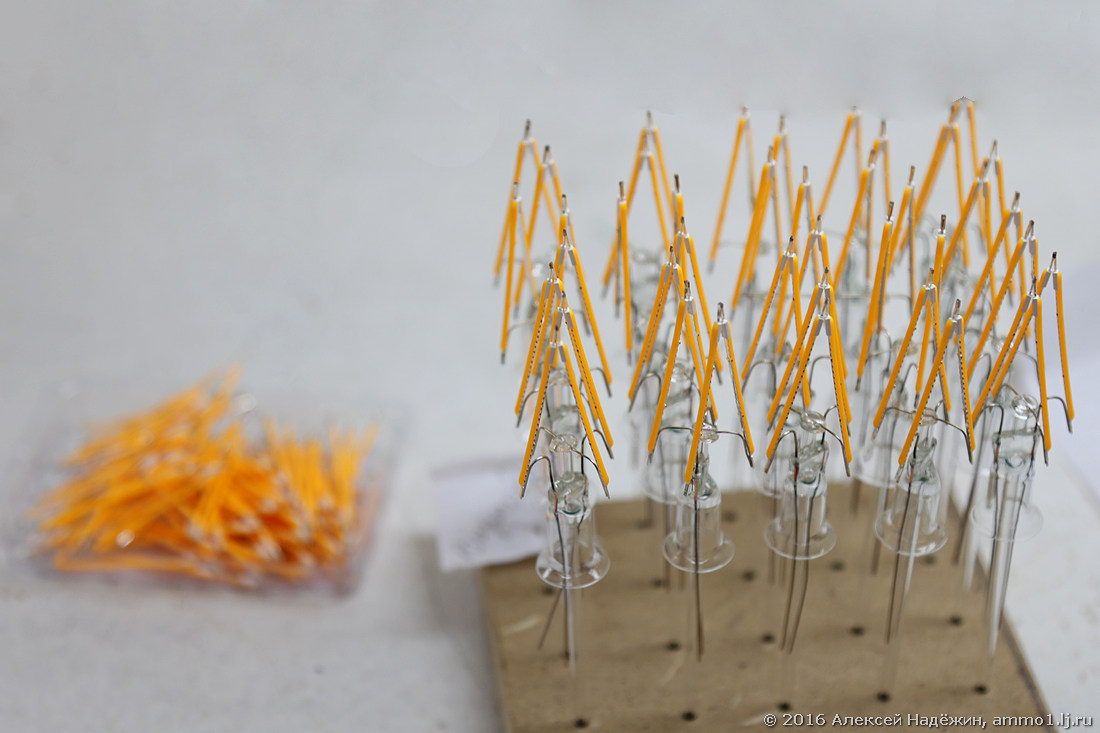
The threads are welded together and welded to the feet electrodes.

In the base of the lamp there is a small round electronics board - the driver.
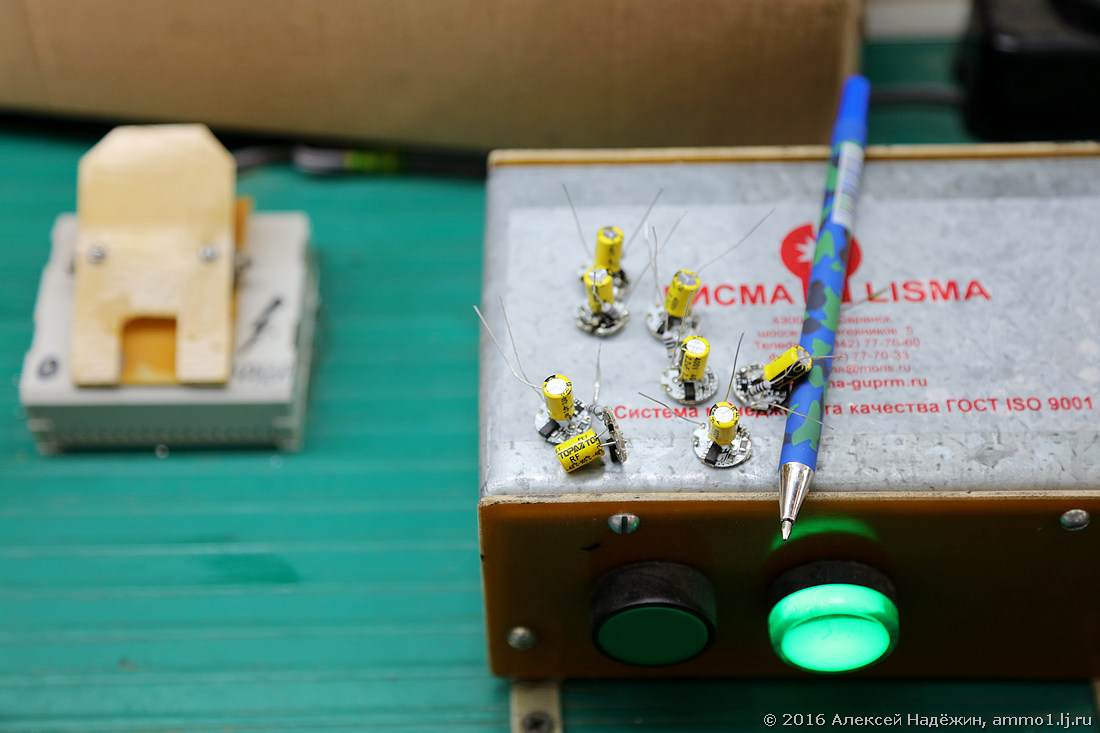
It is a power supply that converts AC mains voltage to DC voltage with minimal ripple to power LED threads.
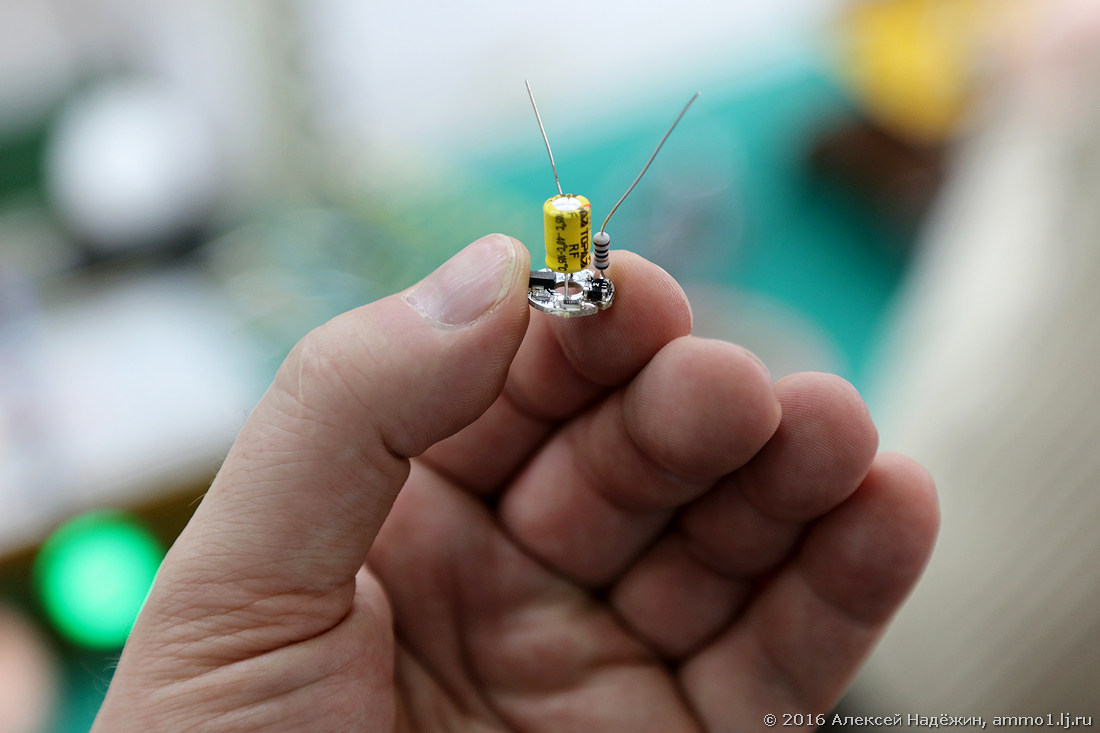
Installers solder the contacts of the lamp feet to the driver board.
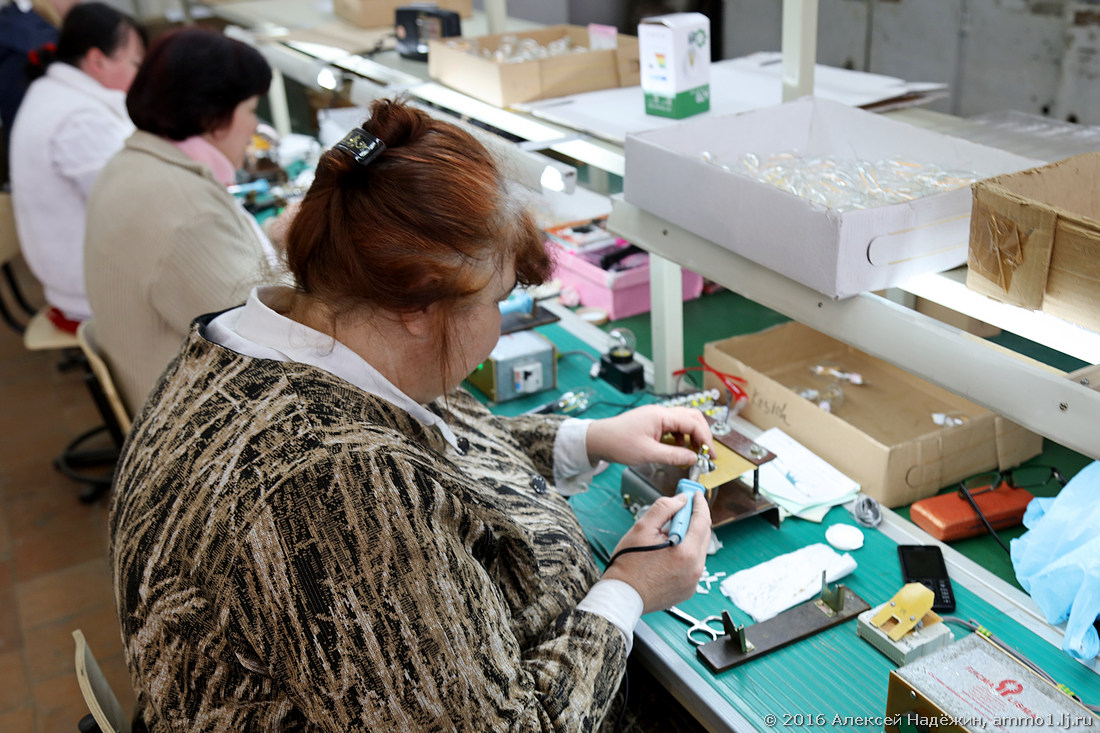
Each lamp is checked before assembly.

The automatic device inserts a leg with filaments into the flask, evacuates the air, fills the flask with helium and brews it.

Specially photographed helium balloon connected to the machine.
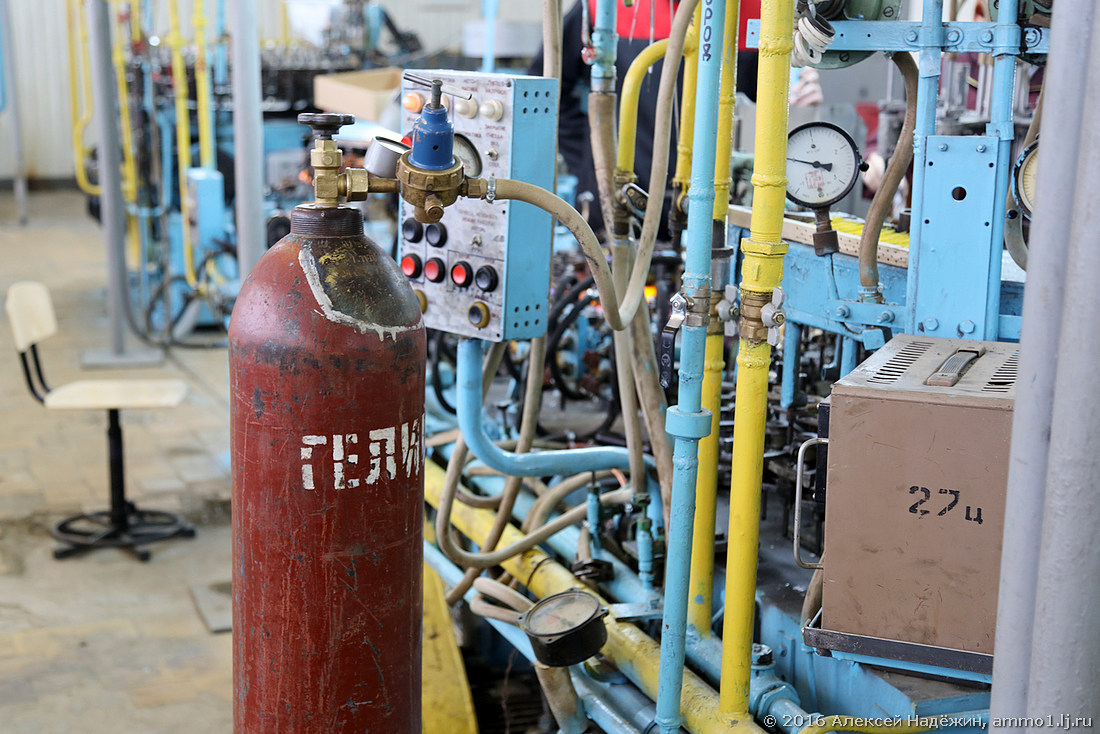
The installer welds the contact of the lamp foot to the base.

All lamps are checked and lit for several tens of minutes.
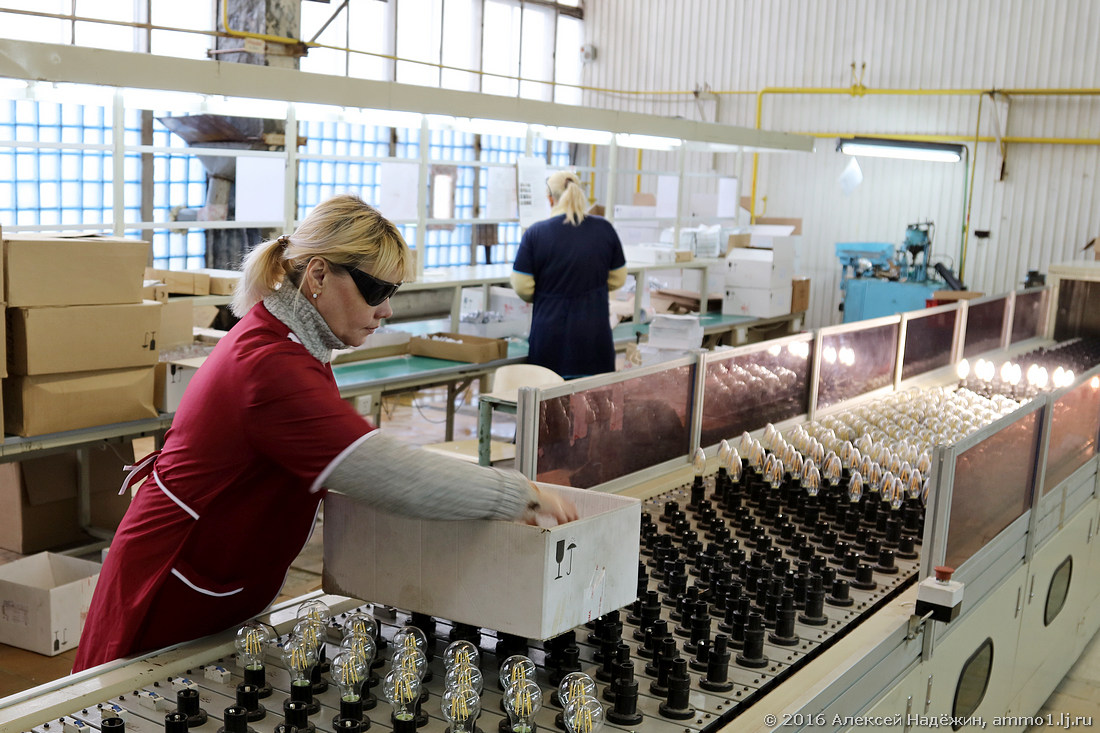
There are special cartridges on the test stand - the lamp is not screwed into them, but simply inserted.
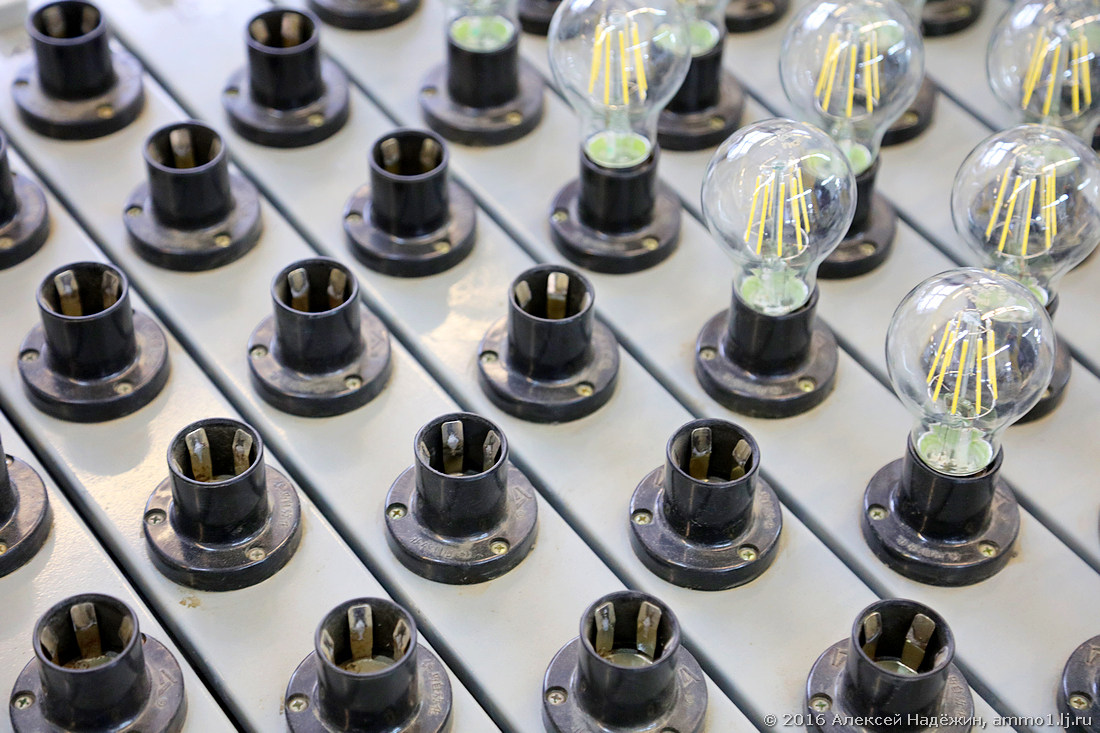
The final stage of production is the packaging of the lamps.

But that is not all. The factory has a testing center and measurement laboratory. Lamps undergo a long-term burning test.

Lamps are tested for resistance to low and high temperatures, are subjected to vibrations and even measure the size of the contacts of the base so that they fit any cartridge.
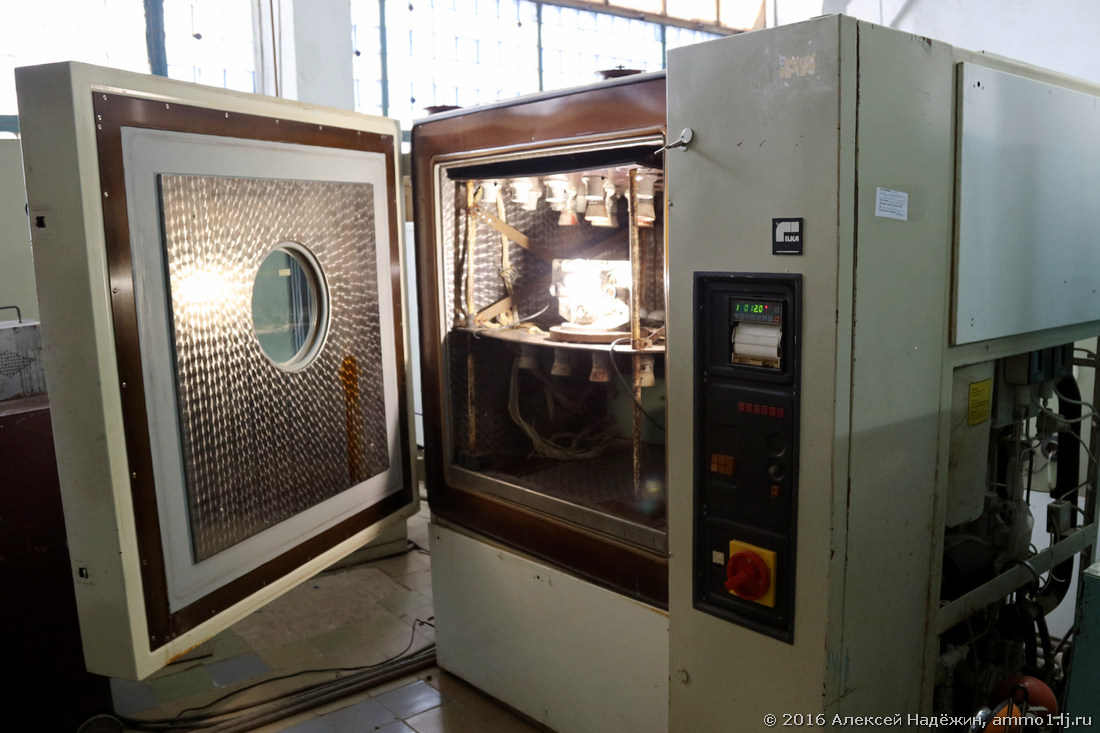
Lamps from each batch are tested without fail.
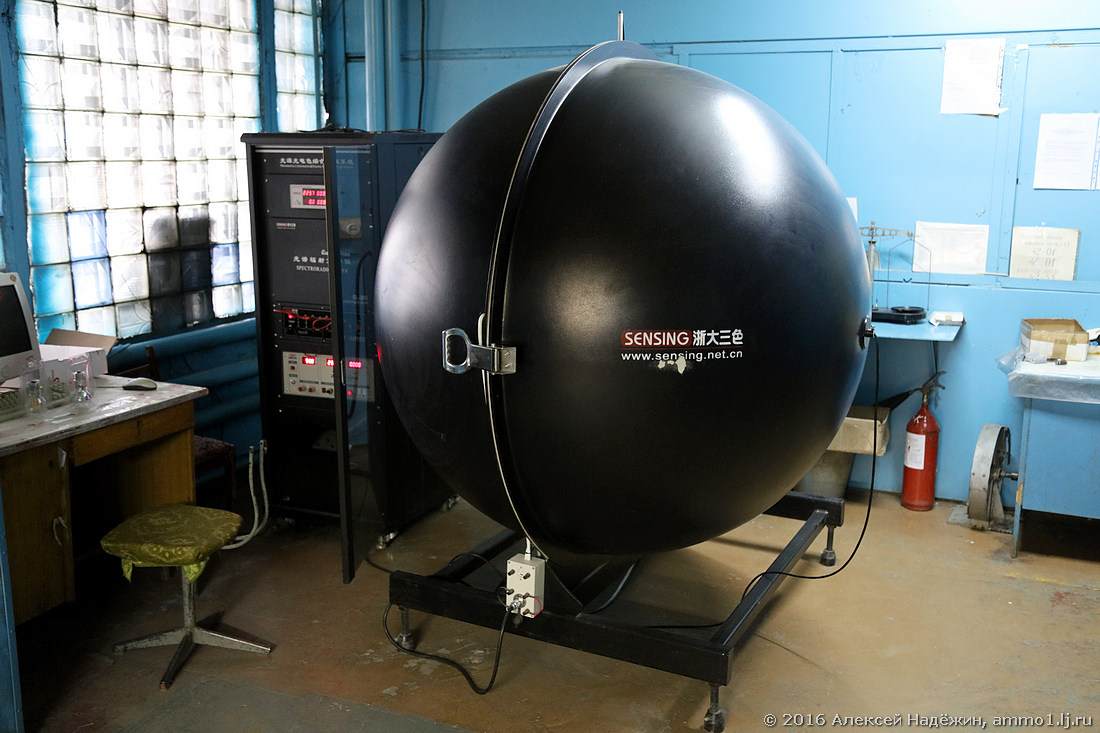
The integrating sphere, in the center of which the lamp is placed, allows you to accurately measure the luminous flux (the amount of light that the lamp gives).
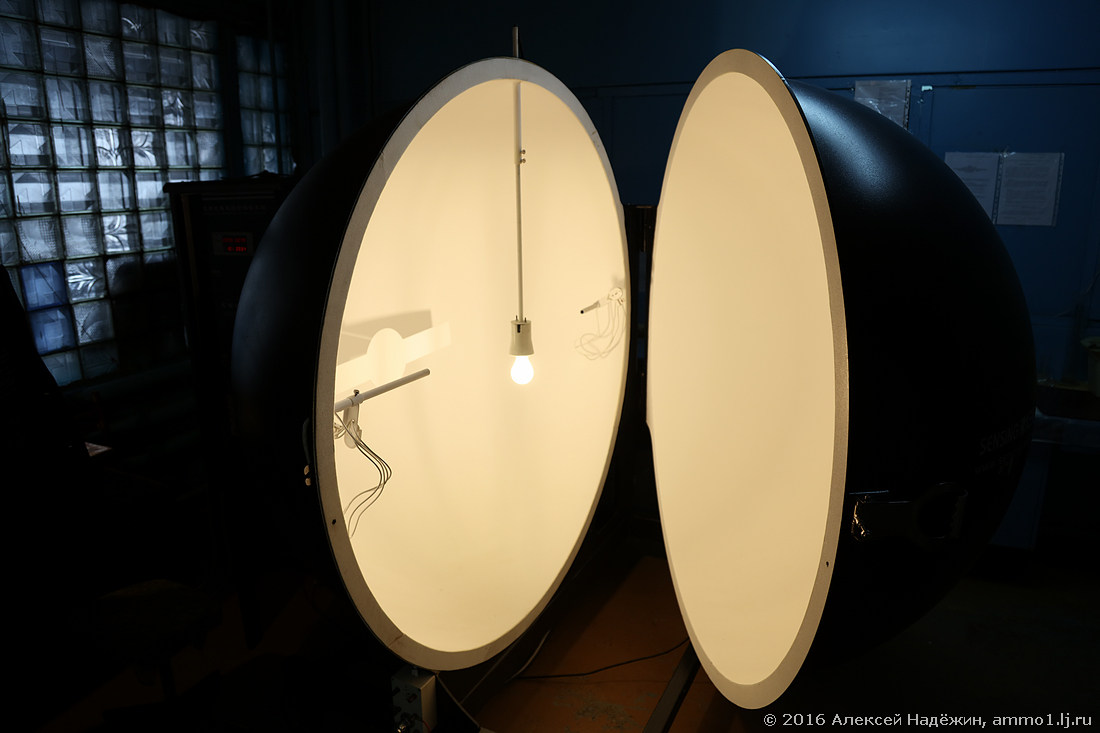
In addition, electrical parameters of the lamp, color temperature and color rendering index, light pulsation are measured.
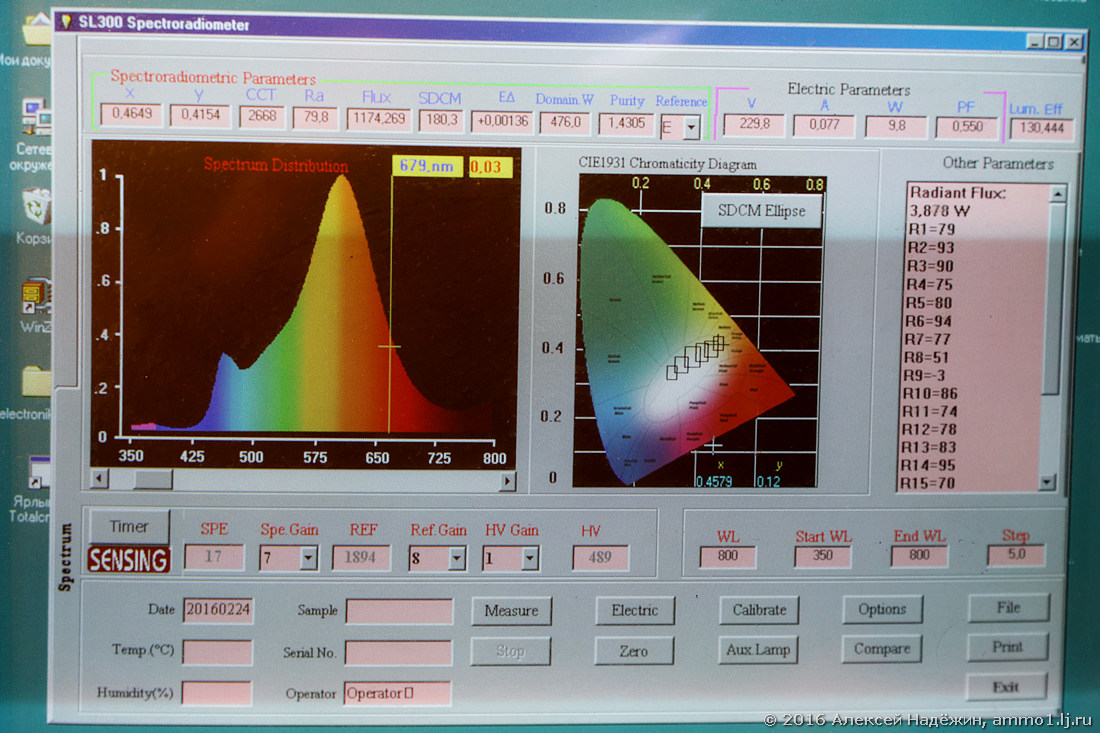
20 lamps are tested from each batch, all parameters are saved in paper protocols.
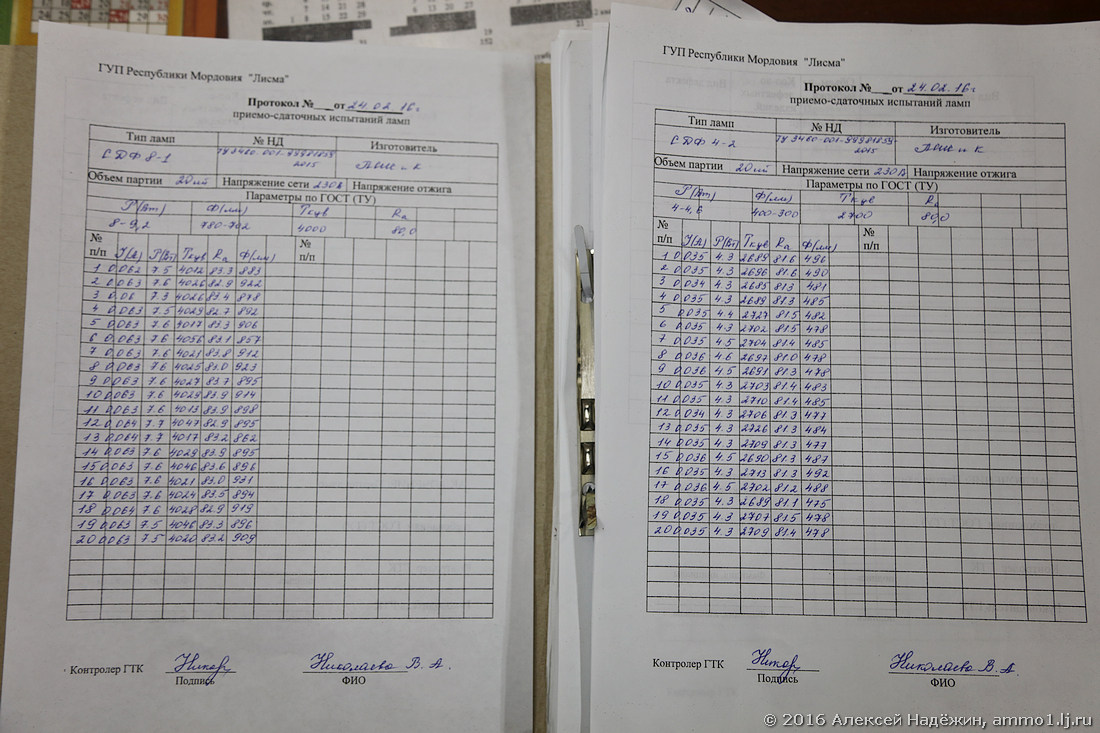
Of course, the process of any production is much more visible in the video, so I shot and edited this small video.
www.youtube.com/watch?v=FygyYs1w9o0
Now Lisma produces 4, 6, 8 and 9 W LED pears, replacing incandescent bulbs 40, 60, 75 and 95 W, transparent and matte 2 and 4 W candles, replacing incandescent bulbs 25 and 40 W. Production of opaque and transparent reflector lamps will begin soon.
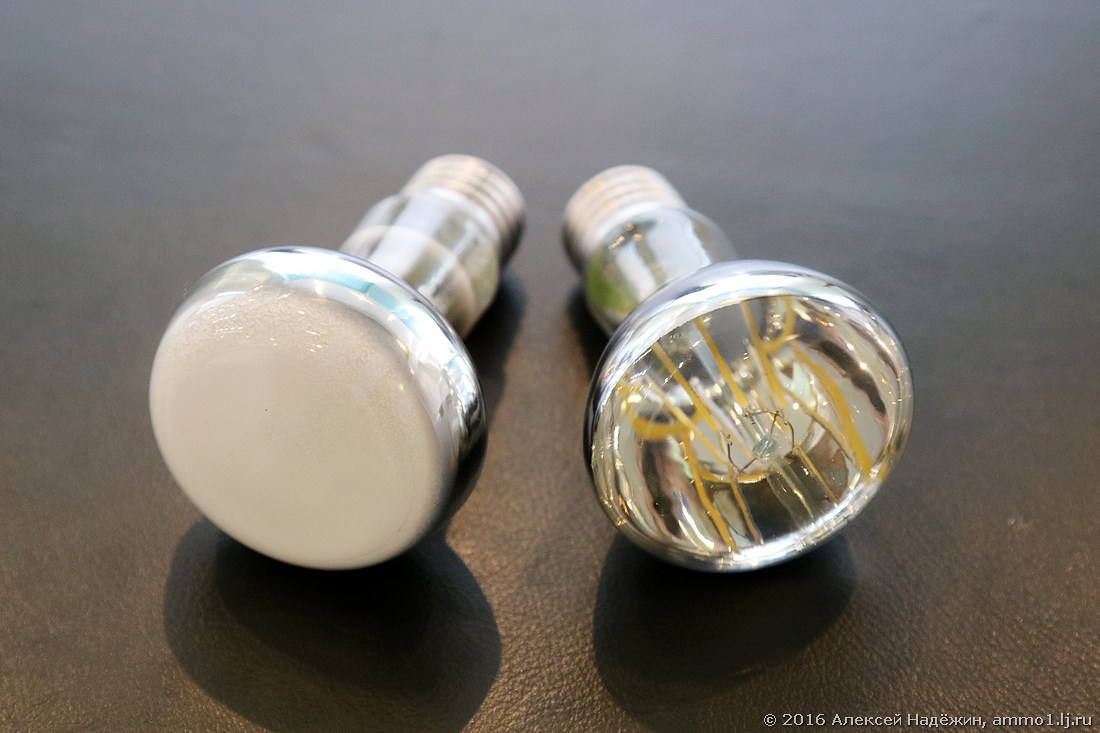
In addition to the production of LED lamps, I saw automatic lines that produce ordinary incandescent lamps. How ordinary light bulbs are made, I will tell you separately in my blog .
upd .: The plant has its own online store with delivery throughout Russia: www.lisma-guprm.ru/katalog-produktsii/svetodiodnye-lampy
© 2016, Alexey Nadyozhin

It all starts with the production of glass, which is born in the furnace and drawn into a thin flat tube.
')

Before it cools, the tube stretches several tens of meters through the workshop.

Then the tube is cut and legs and bulb tubes are made from these pieces.

Glass tube cutting machine.

Glass blower. There are dozens of them in the workshop.

The power of the plant allows not only to use its glass, but also to supply them with other lamp plants that do not have their own glass production. Blanks are waiting for shipment, the process is managed by the Chief in the hot shop. Did you notice him?

Here it is in all its glory!

The machine forms the lamp stem, brewing wire-electrodes into it.

Lisma produces 30,000 LED lamps per month. At the same time, conventional lamps are produced millions and their production process is fully automated. When the volume of LED lamps produced becomes large, the production process will also be fully automated, but so far the lamps are assembled manually.
LED filaments - the basis of the filament LED lamps are purchased in China. But on the leg of their hands were welded Russian workers.

The threads are welded together and welded to the feet electrodes.

In the base of the lamp there is a small round electronics board - the driver.

It is a power supply that converts AC mains voltage to DC voltage with minimal ripple to power LED threads.

Installers solder the contacts of the lamp feet to the driver board.

Each lamp is checked before assembly.

The automatic device inserts a leg with filaments into the flask, evacuates the air, fills the flask with helium and brews it.

Specially photographed helium balloon connected to the machine.

The installer welds the contact of the lamp foot to the base.

All lamps are checked and lit for several tens of minutes.

There are special cartridges on the test stand - the lamp is not screwed into them, but simply inserted.

The final stage of production is the packaging of the lamps.

But that is not all. The factory has a testing center and measurement laboratory. Lamps undergo a long-term burning test.

Lamps are tested for resistance to low and high temperatures, are subjected to vibrations and even measure the size of the contacts of the base so that they fit any cartridge.

Lamps from each batch are tested without fail.

The integrating sphere, in the center of which the lamp is placed, allows you to accurately measure the luminous flux (the amount of light that the lamp gives).

In addition, electrical parameters of the lamp, color temperature and color rendering index, light pulsation are measured.

20 lamps are tested from each batch, all parameters are saved in paper protocols.

Of course, the process of any production is much more visible in the video, so I shot and edited this small video.
www.youtube.com/watch?v=FygyYs1w9o0
Now Lisma produces 4, 6, 8 and 9 W LED pears, replacing incandescent bulbs 40, 60, 75 and 95 W, transparent and matte 2 and 4 W candles, replacing incandescent bulbs 25 and 40 W. Production of opaque and transparent reflector lamps will begin soon.

In addition to the production of LED lamps, I saw automatic lines that produce ordinary incandescent lamps. How ordinary light bulbs are made, I will tell you separately in my blog .
upd .: The plant has its own online store with delivery throughout Russia: www.lisma-guprm.ru/katalog-produktsii/svetodiodnye-lampy
© 2016, Alexey Nadyozhin
Source: https://habr.com/ru/post/396921/
All Articles